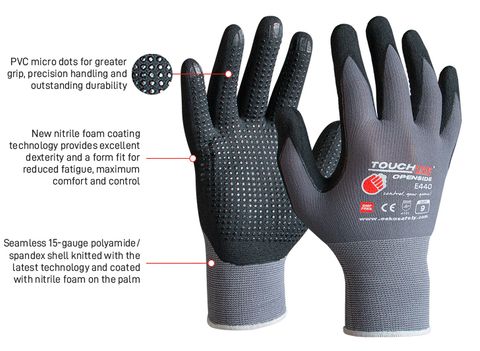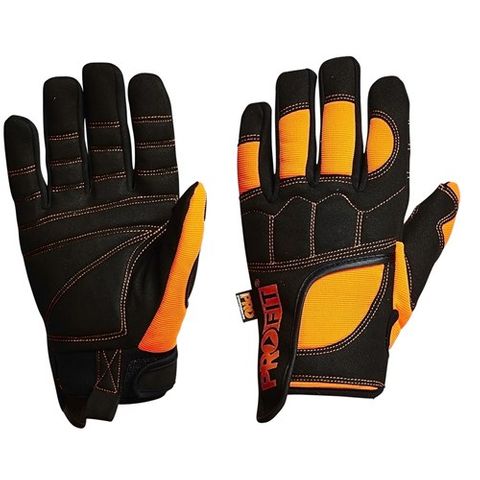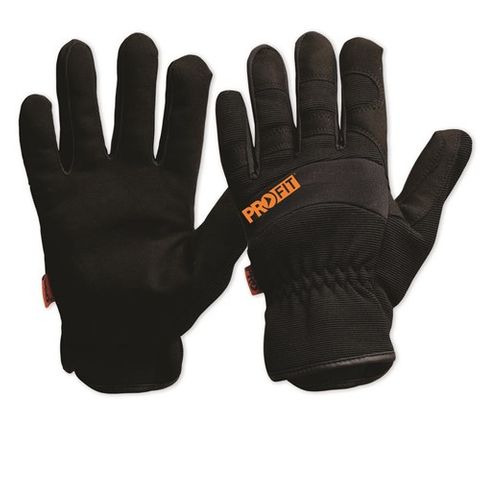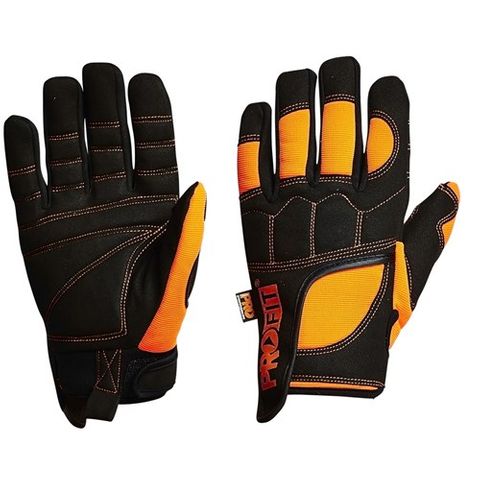- Home /
- Health & Safety /
- Gloves /
- ESKO TOUCHLINE DOT GRIP GLOVES LARGE 09
Shop Now
- Sealants
- Service Items
- Chemicals
- Cleaners / Polish
- Consumables
- Hand Tools
-
Fasteners
- Metric Set Screws
- Imperial Set Screws
- Imperial Hex Bolts
- Metric Hex Bolts
- Imperial Cap Screws
- Metric Cap Screws
- Imperial Countersunk
- Metric Countersunk
- Imperial Button Head Bolts
- Metric Nuts & Washers
- Metric Button Head Bolts
- Self Tapping Screws
- Misc Fasteners
- Threaded Rod
- Metric Countersunk Allen Head
- Metric Pan Slot
- Rivets
- Cutting Tools
- Power Tools
- Lubricants & Oils
- Health & Safety
- Welding / Heat
- Hoses & Clamps
- Toolboxes
- Misc Items
- Abrasives
- Fittings & Valves
ESKO TOUCHLINE DOT GRIP GLOVES LARGE 09
Description
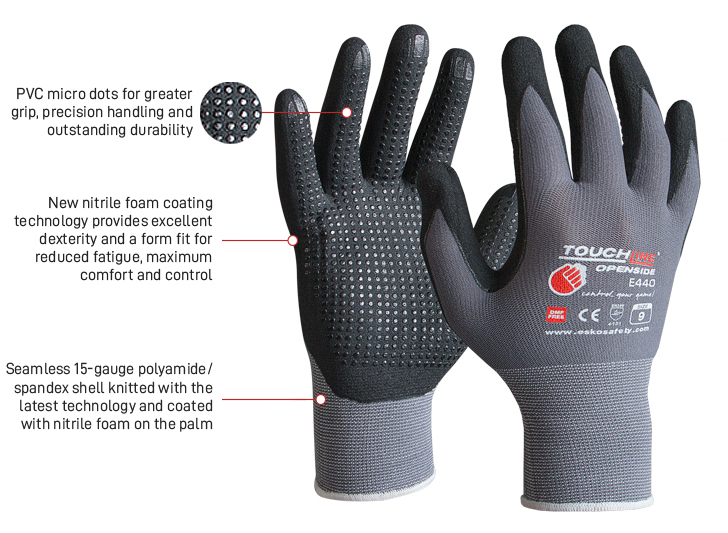
- Seamless 15-gauge polyamide/spandex shell knitted with the latest technology and coated with nitrile foam on the palm
- PVC micro dots for greater grip, precision handling and outstanding durability
- New nitrile foam coating technology provides excellent dexterity and a form fit for reduced fatigue, maximum comfort and control
- Header carded for retail display
- Sizes 7–11
- General Handling
- Transport
- Timber handling
- Assembling
- Warehousing/logistics
- Packaging
- Materials handling
EN 388:2016
Updates the EN 388:2008 standard. It continues the previous test’s methods with some alterations including a change to the way the coup cut test is carried out (the second figure giving the coup cut resistance rating may be expressed as 'X' if the glove is not tested under the coup test or if the rolling blade becomes blunt before the test is completed). It adds a fifth letter (A to F, with F being highest) for cut resistance using the sliding blade TDM test and a sixth letter to indicate impact protection, expressed as 'P' for pass. If the glove is not designed to provide impact protection the sixth figure is left out, or sometimes 'F' (fail).
EN 407
The standard for gloves to protect against thermal risks. The numbers indicate the glove’s performance for (1) material fire properties, (2) contact heat, (3) convective heat, (4) radiant heat, (5) small splashes, and (6) large quantities of molten metal. The higher the number the better the performance.


